Welcome to the 60's thread! This is the place to discuss anything to do with this decade, from music and film to news events and fashion trends  Prepare yourself for some in-depth opening posts, us mods got a bit excited about this particular topic
Prepare yourself for some in-depth opening posts, us mods got a bit excited about this particular topic 
1960s: Space Science
As the 1960s opened, the world was still reeling from the successes of the Soviet space program. The “space race” between the United States and the Soviet Union – and the spinoff technologies it spawned – dominated the science scene in the 1960s. But there were other noteworthy advances. Early in the decade, the first communications/TV (Telstar) and weather satellite (Tiros I) were launched. These paved the way for the worldwide TV broadcasts and global weather pictures we all take for granted: back then they were revolutionary.
The Soviets advanced quickly after becoming the first nation to launch an artificial satellite (Sputnik in October 1957), launching dogs and chimps into space before Yuri Gagarin became the first human to orbit the earth in his Vostok 1 craft in April 1961.
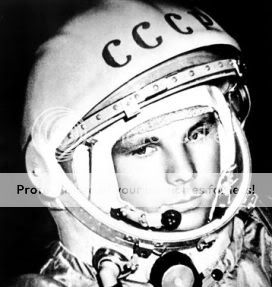
America’s first man in space, Alan Shephard, took a short suborbital trip a month after Gagarin’s successful orbit. The tiny Mercury capsule was launched on a Cold War ballistic missile, the Redstone.

Twenty days after Shephard's trip, on May 25, 1961, President John F. Kennedy, addressing a joint session of Congress, proposed a goal of “before this decade is out, landing a man on the moon and returning him safely to the earth.” He later gave another famous “moon speech” at Rice University in Houston. (Read or listen to these speeches here and here, respectively).
The one-man Mercury missions were quickly followed by the two-man Gemini program, with larger rockets and payloads, in which astronauts practiced maneuvers vital to moon trips.
The Soviets, too, practiced various orbital maneuvers, continuing to add to their impressive list of space “firsts”: the first woman in space (Valentina Tereshkova, who flew in Vostok 6 in August 1962); the first multiple-person crew; the first use of two spaceships in orbit, and so on.
There was a flurry of unmanned missions aiming toward the moon. In 1966 alone, the Soviet Luna 9 became the first to land there and transmit from the surface, and Luna 10 became the first vehicle to enter lunar orbit. The US responded with Surveyor 1, which landed on the moon, and Lunar Orbiter 1, which photographed potential Apollo landing sites.
The inner solar system wasn’t lost in all this activity. Venus was targeted for flyby with two American Mariner craft, as did the Soviet Venera 1. Veneras 3, 4, and 5 attempted to land on the planet but were destroyed in its atmosphere, revealing an incredibly inhospitable place with temperatures and atmospheric pressures far beyond those expected.
The American Mariner 4 returned pictures of Mars during its flyby in 1964, revealing the Red Planet to be a cratered body something like the moon. There were a number of Soviet attempts to explore Mars, but these all failed due to various technical problems.
In January 1967, less than 6 years after Kennedy’s speech, the Apollo program’s push to the moon met with tragedy when three astronauts – Roger Chaffee, Ed White, and Gus Grissom – died in a fire during an Apollo 1 launch rehearsal. This caused a delay while the spacecraft systems were redesigned.
However, rumors that the Soviets were about to launch a manned moon mission (possibly using its massive N1 rocket) – or at least send a robot probe to return with a sample of moon soil – prompted NASA to step up its efforts to return to space, and in December 1968 three men became the first to ride the massive Saturn V rocket – then the world’s most powerful vehicle – to lunar orbit.
From there the men took what has since become one of the signature images of the space program, a sight never before seen, of the earth rising over the moon:
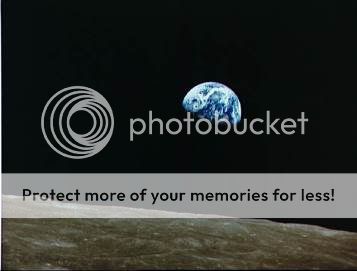
In addition to describing the incredibly desolate terrain below them (Frank Borman called it "a vast, lonely, forbidding expanse of nothing"), the three astronauts sent a Christmas message to the people back on earth: those famous opening words to the Book of Genesis:
In the beginning God created the heavens and the earth…
After reading the first ten verses, Borman, Jim Lovell (who would later command Apollo 13) and William Anders closed with, "And from the crew of Apollo 8, we close with good night, good luck, a Merry Christmas, and God bless all of you, all of you on the good Earth."
The success of Apollo 8, and additional tests on Apollo 9 and 10, led to the first moon landing on July 20, 1969. Apollo 11 commander Neil Armstrong became the first person to walk on another world late that evening.
“That’s one small step for [a] man, one giant leap for mankind.”
The picture was fuzzy and grainy, but it was still magic: man had reached the moon!
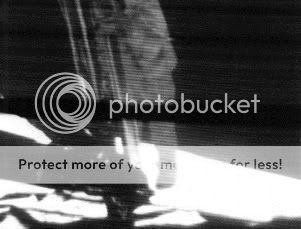
Astronauts Armstrong, Buzz Aldrin, and Mike Collins returned several days later to a heroes’ welcome, ticker-tape parades, and a trip to the White House.
During the Apollo 11 mission, the unmanned Soviet Luna 15 crashed landed elsewhere on the moon. It was a third attempt to land and return samples to the earth.
Just for good measure, Apollo 12 landed on the moon just a few months later. Its astronauts visited Surveyor 3, an unmanned lander which had arrived nearby about two years earlier.
It’s worth noting that these astronauts traveled to and from the moon relying on computers with less computing speed or power than even today’s hand-held devices like ipods offer.
But all night, Aslan and the Moon gazed upon each other with joyful and unblinking eyes.
1960's In the News
1960 - A photographer named Alberto Korda takes the ‘Guerrillero Heroico’ photo of Che Guevara. Many experts believe it is now the most reproduced image in history, which is either incredibly silly or very appropriate, depending on how you look at it.

1961 - Bay of Pigs Invasion
CIA-trained exiles attempt to invade Cuba and overthrow Fidel Castro. Largely due to the extensive training and experience of the Cuban forces the invasion fails. Cue an increase of Cuban support for Fidel Castro and a lot of sass from Che Guevara. No one likes a show off, Che.

Fidel Castro watching the invasion from a tank.
In the same year construction of the Berlin Wall begins. I once prodded a remaining section of the wall, but it doesn’t really resemble much of anything anymore, which is probably for the best.
1962 - Cuban missile crisis. This was the closest the Cold War ever came to nuclear aggression. In a nutshell, the Soviets started to build bases in Cuba for nuclear missiles. Cuba being 90 miles off the coast of Florida meant this was much too close for comfort for the US government’s liking. Just how close this came to conflict is pretty insane: Proof of the bases was received on October 14th, and Kennedy gave the Kremlin until October 28th to pack their bags before he ordered an attack. It was eventually resolved (in a very uncomfortable, I-still-don’t-like-you sort of way) by the Soviets removing the missiles in exchange for the US agreeing never to invade Cuba.

Nuclear missiles in Red Square
I often wonder why the Soviet Union seemed to like parading missiles through Red Square so much, it seems very foolhardy to me.
1963 - Betty Friedan publishes The Feminine Mystique, which is considered the spark that ignited the second wave of feminism. A few months later, the Equal Pay Act is passed, making it illegal to pay men more than women for doing the same job.
Martin Luther King makes his famous ‘I Have a Dream’ speech on the steps of the Lincoln Memorial.

JFK makes a cracking speech in West Berlin where he, contrary to popular belief, did not refer to himself as a doughnut. A few months later he is assassinated. Although Lee Harvey Oswald was named as the assassin, many didn’t believe this version of events, sparking a flurry of conspiracy theories.
1964 - Civil Rights Act outlaws racial segregation.
1965 - Operation Rolling Thunder begins, an aerial bombardment campaign that lasts until 1968.
1966 - China’s cultural revolution begins.
1967 - Ernesto ‘Che’ Guevara is assassinated in Bolivia, bringing an end to the extraordinary journey of an Argentinean medical student who became Cuba’s most beloved son and a thorn in the side of the US administration. Remembered as a martyr by some and cold blooded executioner by others.
1968 - A very busy year. In what I think is the right order, it begins with the Prague Spring. Prague was under Soviet rule at the time and tried to reform the control the Union held over them. The Soviets took a dim view of this and thousands of tanks and troops were sent to occupy Czechoslovakia. This sparked a wave of riots and mass emigration and although protests remained non-violent, two students set themselves on fire in protest.

The Prague Spring had a huge hand in increasing Europe’s distance from the Soviet Union and is probably best known for the setting of Milan Kundera’s novel The Unbearable Lightness of Being.
The Tet Offensive begins. It was intended to begin an uprising that would end the war for the National Liberation Front, but despite US and South Vietnamese troops at first being surprised by the attack, the Offensive was beaten back.
Martin Luther King is assassinated a day after making his ‘I’ve Been to the Mountaintop’ speech. The news led to a spate of riots across the country.
Finally, in May students and workers in France began to strike and protest in an attempt to topple the capitalist monopoly and change society. This period is now know as Mai 68 and is largely responsible for France’s shift from a conservative ideal to the liberal idealogy France is known for today (...sometimes).

On the Radio
Jimi Hendrix

I’ll let a film character describe this one -
“Clapton plugs in a guitar, he plugs in an electric guitar and he plays it like an acoustic guitar. Hendrix plugs in an electric guitar, he plays it with his teeth. There are soldiers in the Vietnam War right now. Who are they listening to? Clapton? No, they're listening to Hendrix. The guy who tells the truth.”
Janis Joplin

“I'm one of those regular weird people.”
Much like Hendrix and his guitar, Joplin's vocal style was in a league of it’s own and blew people away. When looking through photos of her a while ago what struck me was that in every one she had that huge grin on her face, she seemed like such a vital, alive person and this comes through in her music. Me and Bobby McGee is one of my top 5 songs, I’ve heard loads of covers but Joplin’s is the only one where you can believe what she’s singing.
Bob Dylan

I’m starting to think Bob Dylan is one of those people that will just live forever. His voice has been described as “sand and glue” but it’s his lyrics that are really something. A lot of critics consider his lyrics akin to poetry and I don’t think they’re far off. The Times They Are a-Changin’ was released in 1964 and became an anti-war and civil rights anthem.
Joan Baez

Baez and Dylan at a Washington civil rights march, 1963
I could listen to Joan Baez sing the alphabet. A close friend of Dylan, she was also very active in the anti-war movement (and is still an active campaigner for several causes today). She’s best know for her covers of other peoples songs, but her own are just as wonderful. Some highlights are Diamonds and Rust, To Bobby (both written about Dylan), Blessed Are and Sweeter For Me.
Jefferson Airplane

Jefferson Airplane front woman Grace Slick with Janis Joplin
Formed in 1965, Jefferson Airplane was fronted by Grace Slick from 1965 onwards. I find songs like Somebody To Love and We Can Be Together to be so indicative of the 60’s sound.
The Beatles

I included The Beatles in this post because there’s no denying they were huge, but I’m not actually much of a fan. I love Here Comes the Sun and Let It Be but otherwise I’m a bit meh regarding them. This probably because I seem to have a love of the ‘San Francisco sound’ of the time which The Beatles were a million miles away from. If any more knowledgeable members want to go into more depth about them, feel free 
The Grateful Dead

I didn’t listen to Grateful Dead for ages despite hearing the name thrown around because the band name made me think they were some heavy metal group. I was very wrong. It’s hard to describe what they really are, it’s a strange mix of folk, rock, psychedelia and a bit of bluegrass.They have an enormous back catalogue of live and improvised music, but my favorite song of theirs is Ripple, a studio recording.
And to sum up all of the above, I give you Woodstock, 1969 -

Performances by Richie Havens, Joan Baez, Grateful Dead, Janis Joplin, The Who, Jefferson Airplane and Jimi Hendrix and more entertained a crowd of 400,000.
I always thought it was strange that Bob Dylan didn’t play at Woodstock, when I looked it up I was amused to find “He was unhappy about the number of hippies piling up outside his house” as one of the reasons he didn’t go 
There is a crack in everything, that's how the light gets in.
In the movies:
The 60’s marked a change in movie-making. Films began to take more risks, breaking social taboos with controversial topics and more adult subject matter. Thus began the “New Hollywood”.
1960—

Psycho is possibly Alfred Hitchcock’s most famous film. The storyline includes a deserted motel, and a psychopath. Alfred Hitchcock issued a “no late admission” policy for the film, which at first irritated theater owners but initially helped create even more buzz. This was one of the highest grossing movies of 1960, and fifty years later it still guarantees to shock viewers with the unexpected ending.
1961--
West Side Story

The second highest grossing movie of the year, West Side Story is an adaption of Romeo and Juliet, set in streets of Manhattan in the late fifties. Two teens from feuding NYC gangs fall in love against all odds. At the Academy Awards it came away with ten Oscars, not to mention several nominations.

Another highly popular and successful movie of this year, and often considered one of the most fashionable films to be found, Breakfast at Tiffany’s is Audrey Hepburn’s most memorable role. The song “Moon River”, sung by Hepburn during the film, won an Oscar that year for Best Song.
1963—

Dr. No marks the beginning of the James Bond film franchise, and also the start of Sean Connery’s role as the good-looking secret agent with a “license to kill”. The movie also gives us the now trademark statement “Bond…James Bond.”
Other films released during this year include The Great Escape, Bye Bye Birdie, Cleopatra, How the West Was Won, and The Birds.
1964—

Mary Poppins stars Julie Andrews as the magical, eccentric nanny who comes to look after the children in an unhappy family. Some memorable songs from this well-loved musical include “A Spoonful of Sugar” and “Supercalifragilisticexpialidocious"
1965—
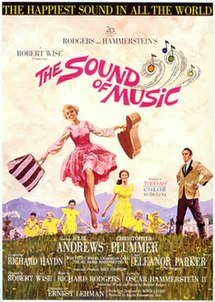
The Sound of Music, another highly popular and beloved musical starring Julie Andrews, and based on the true-life story of the von Trapp family releases in theaters this year. It brought back five Academy Awards, and the soundtrack was nominated for a Grammy. It also has the honor of being THE highest grossing movie of the decade.
1967---

Bonnie and Clyde, starring Warren Beatty and Faye Dunaway, tells the true-life story of Great Depression bank robbers Clyde Barrow and Bonnie Parker. It sparked controversy due to the presenting of criminals, or anti-heroes, as the protagonists. The non-traditional, rebellious nature of the story appealed to the younger audience and the counter-culture of the late 60’s. Even though critics were divided, it still managed to get nominated for 10 Oscars (winning two), and was selected for preservation in the United States National Film Registry.
1968—

Bullitt, a film about a hardcore American cop called Frank Bullitt (Steven McQueen) who is hunting down the bad guy who killed the witness he was supposed to be protecting. The movie’s car chase sequence was highly anticipated and still remains as one of the most influential car chases in movie history.
Other films this year include Rosemary’s Baby, The Lion in Winter, Oliver!, and The Thomas Crown Affair.
1969—
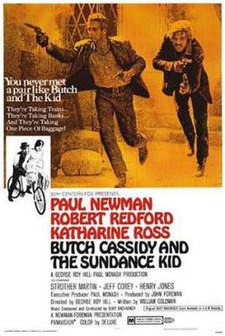
Butch Cassidy and the Sundance Kid—this film is a Western starring Paul Newman and Robert Redford as two bank robbers, Butch Cassidy and Harry Longabaugh. It’s not only one of the highest grossing movies of the decade, but amongst the 100 highest grossing movies ever. Among the four Academy Awards it won was Best Cinematography, and it nominated for three others.
Television
The Andy Griffith Show, (1960) a sitcom about a small-town sheriff and the many humorous complications he deals with.

Coronation Street— (1960) This British soap-opera is still running today, even though critics were skeptical about its success

Mister Ed, (1961) a comedy about a talking horse and his owner, eccentric Wilbur Post.

The Beverly Hillbillies, (1962) a hilarious sitcom about a backwoods family who moves to Beverly Hills after striking it rich.

Doctor Who, (1963)
The premiere of the sci-fi show is another 60’s program that is still around today. William Hartnell marks the first of many excellent actors to take the part of the time-traveling Doctor.
Other television shows that began during the 60’s include: Batman, Star Trek, Mr. Dressup, Scooby-Doo, The Brady Bunch, I Dream of Jeannie, Days of Our Lives, and Gilligan’s Island.
Fashion:

In the early 60’s women were wearing a lot of pastel colors. Simple, stream-lined shift dresses were popular, and Jacqueline Kennedy (in the yellow, above) was a fashion icon. Styles were simplistic, and lady-like.

The mid 60’s was the start of a dramatic change in fashion. The British “mod” look took over, with the mini-skirt or mini dress being a wardrobe staple for girls. High heels were swapped for flats, or go-go boots. Bright colors and psychedelic patterns were in. Girls piled on the mascara and pale lipstick. The popularity of model Twiggy marked a change, with her cropped hair, and skinny, boyish figure. Audrey Hepburn and Mia Farrow’s pixie cuts were also copied.

Some young men favored the “Teddy Boy” style—a fussy, “dandified” look inspired by Edwardian fashions.The Beatles were also a large influence and inspired many young men to grow their hair long, much to the chagrin of their parents!
"Imperfection is beauty, madness is genius, and it's better to be absolutely ridiculous than absolutely boring." Marilyn Monroe
“That’s one small step for [a] man, one giant leap for mankind.”
Martin Luther King makes his famous ‘I Have a Dream’ speech on the steps of the Lincoln Memorial.
JFK... assassinated.
Martin Luther King is assassinated a day after making his ‘I’ve Been to the Mountaintop’ speech.
That first step on the moon, I can't imagine how he felt that day, nor how people back at Earth felt. I remember learning about that in school, one of the things I've never forgotten.
King and Kennedy,
famous speeches and famous assassinations. Of the president I can't say much, but I definitely remember studying about King. His story always fascinated me, how a man could stand up against opposition for what he believed in.
The movies,
I loved Mary Poppins as a kid, and still enjoy it. I liked The Sound of Music as a kid, but love it now! The only two Julie Andrews movies I've really ever loved.
Good job, all three of you with your respective subjects. 
Ooh, I'm a big fan of the Beatles!  I absolutly love them, the sound of their music is just about right for anything and any mood, imho.
I absolutly love them, the sound of their music is just about right for anything and any mood, imho. 
I'm not super familair with 60's music except to say that I like it.  Two movies out this year that I love take place in the 60's (Pirate Radio, and An Education), and have some great 60's songs on their soundtracks. From Pirate Radio's soundtrack I reallyreally love:
Two movies out this year that I love take place in the 60's (Pirate Radio, and An Education), and have some great 60's songs on their soundtracks. From Pirate Radio's soundtrack I reallyreally love:
All of the Day and All of the Night by The Kinks
Elenore by The Turtles
I Can See For Miles by The Who
I don't really know anything much about any of those bands, but I do love those songs. 
As for movies that I love from the 60's, my favorites would be Bye Bye Birdie, Bonnie & Clyde, Breakfast at Tiffiany's, and The Great Escape. I haven't seen all of the ones I posted about (I tried to go by most popular), but I want to try to see more of them for sure 
"Imperfection is beauty, madness is genius, and it's better to be absolutely ridiculous than absolutely boring." Marilyn Monroe
As for movies that I love from the 60's... I haven't seen all of the ones I posted about (I tried to go by most popular), but I want to try to see more of them for sure
I say start with The Sound of Music! that's a MUST SEE! 
I really think Julie Andrews deserved the Oscar for that movie, unfortunately she won the year before with Mary Poppins: which I am positive they saw as similar roles, even though they are totally different movies, and so they awarded someone else- who was just as worthy I assume.
Ahh, the 60's. Needless to say, I was not around way back then  , but I have grown up with much of the movies and the music of this decade.
, but I have grown up with much of the movies and the music of this decade. 
Music: A short list to add to what Shantih mentioned:
The Beach Boys (I think probably everyone has heard at least ONE of their songs)
The Monkees (Way before the JoBro's, there was these guys)
Cream (Sunshine of Your Love is their defining song. Helped put the spotlight on Eric Clapton)
Simon & Garfunkel (SP?)
The Byrds (Another great group from the decade)
Hermans Hermits (More British Invasion music)
And last but not least..... Creedence Clearwater Revival!!!  Who can forget great tunes like Bad Moon Rising, Fortunate Son and Born on the Bayou?
Who can forget great tunes like Bad Moon Rising, Fortunate Son and Born on the Bayou?
--------------------------
Movies: First off, a fine list of films of the decade, Val!  Now a few more to add (All of these except the first I've seen):
Now a few more to add (All of these except the first I've seen):
The Good, The Bad and the Ugly (1966). The iconic "Spaghetti Western" with Clint Eastwood and Van Cleef as bandits out for gold from the mind of Sergio Leone. Also iconic (and much used) score by Italian composer Ennio Morricone.
Once Upon a Time in the West (1968). Yet another Sergio Leone western, this time with a truly epic approach. Magnificently filmed and definitely a film to see just for the cinematography alone, Leone's last western. Stars Charles Bronson, Henry Fonda (as a demented bad guy), Claudia Cardinale and Jason Robards. Excellent score by Ennio Morricone.
My Fair Lady (1964). Another musical of the decade, this one based off of a Broadway musical of the same name that was based off of the book Pygmalion. Superb musical that won 8 Academy Awards including Best Picture and Best Director. A true "must see" film. Stars Audrey Hepburn and Rex Harrison.
Hello Dolly! (1969). And another musical, this one not quite up to par with the others, but still great fun nonetheless. Memorable songs and dance numbers include title song, "As the Parade Passes By", "Put on Your Sunday Clothes" and "It Only Took a Moment". Wall*E fans definitely need to check this out since there is several references to this film in the Pixar film. 
Stars Barbra Streisand and Walter Matthau.
---------------------------
Alright, I think that's enough..... for now. 
Avvie by the great Djaq!
http://bennettsreviews.blogspot.com/
^ Short tribute to James Horner (1953-2015)
Excellent work, folks!!! As a student of history, from my observation, it was the 1960's when everything started to get a little wacky  .
.
I never much cared for the "New Hollywood"...I like to watch movies as an escape, and they tended to make it a bit gritty for my taste at times. Still there were a number of excellent films produced during the decade, many of which have already been mentioned. Here's a few of my favorites.
Planet of the Apes

Charlton Heston is one of four astronauts en route to another star (I want to say it was Bellatrix, but I can't remember) when they crash land on a hostile world populated by talking, man-sized chimpanzees, orangutans, and gorillas. Worse...the humans on this world are treated as game animals and hunted for sport. The ending was something of a downer but still a good film, and Heston is a big reason for its success.
2001: A Space Odyssey

In a nutshell US astronauts find a large stone monolith on the surface of the moon. After further investigation the strange, black object transmits a signal to Jupiter, and so a large exploratory vessel, the Discovery, is sent to Jupiter with a small crew to investigate. Things start to go very wrong when the ship's computer, HAL-9000, malfunctions and starts to view its human shipmates as obstacles to the mission. 2001 has one of the best movie soundtracks I've ever heard, using Classical music for large swaths of the film. The most confusing ending in movie history. If it weren't for 2010: The Year We Make Contact I still wouldn't know what happened at the end.
The Dirty Dozen
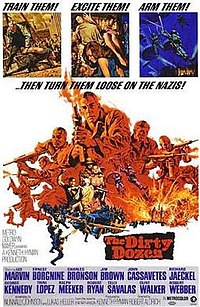
A WW2 thriller starring Lee Marvin, Charles Bronson, Telly Savalas, and Donald Sutherland (among many others!), Marvin plays the part of an Army officer tasked with taking out a group of German generals in northern France shortly before D-Day. The catch? The group he has to use it are all convicted criminals with life sentences or awaiting execution.
Night of the Living Dead

I cannot explain to you why I do, but I love zombie movies. And this is the grand-daddy of what we now look at as the "Zombie Apocalypse" film genre today. The plot of NotLD revolves around a group of 5 strangers who flee to a remote Pennsylvania farmhouse to escape a phenomenon in which the recently dead are reanimated. Said zombies like to eat people. Ick. The film was deemed incredibly graphic for its violence (it is fairly gross at times) but was tightly paced, well scripted, and pretty well acted, and it was all done on a very low budget. The returns that director George Romero got made him a rich guy and allowed him to expand the storyline to numerous more films in the same zombie universe. Beware, this film is not for the feint-hearted! Also, if you find yourself overrun by zombies, a ramshackle farmhouse is probably not your best choice for holing up in until rescue comes. 
Kennel Keeper of Fenris Ulf
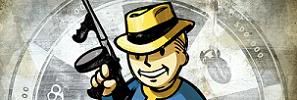
Little known fact about Apollo 11...
Because there was a bit of a stink over the bible verses being read on Apollo 8, it is little known that Buzz Aldrin held a small communion in the lunar module while they were still on the surface.
Really impressive opening posts, everyone! Having worked on just one, I better appreciate all the time and effort Shadowlander has put into the opening remarks for other decades.
A few random remarks from someone who lived through the turbulent 60s:
My earliest memories - of historical events as opposed to family ones - are hearing "Godspeed, John Glenn" during his historic launch, and later hearing the school intercom announce the assassination of JFK. As a rule getting news was different back then - no internet, no cable TV - just 3 broadcast TV channels and local AM radio stations.
So, a daily tradition at home was hearing a familiar radio voice say, "This is Paul Harvey. Stand by for news!" He managed to mix together national news with human-interest type stories - along with what we now understand to be the occasional urban legend. And at night, "Uncle" Walter Cronkite reported the news, always closing with, "And that's the way it is."
I was older when Dr Martin Luther King, Jr, was killed in Memphis - just 4 days shy of my 11th birthday - and then only 2 months later Robert Kennedy was shot in LA. Those 2 images - and my parents shocked reaction to them - remain burned in my memory.
The Prague Spring - mentioned by Shantih above - and the Tet Offensive also filled the news that year. But as much as the Cold War and the Vietnam War dominated the news, the decade wasn't all bad news. I still remember getting goosebumps hearing Genesis read from Apollo 8, and the thrill everyone had of seeing Neil Armstrong walk on the moon. Those were incredible times, both good and bad.
TVs were big "console" units back then, if only to contain the vacuum tubes required before the rise of solid-state electronics. I remember the first show I ever saw on a color TV (an episode of The Roadrunner). Though we didn't get to watch much TV, I remember watching some episodes of the campy 1960's Batman - including the Batusi - so corny it simply must be seen to be believed. And it's soooo 60s. 
https://www.youtube.com/watch?v=exhNT2_bHs8
There were lots of shows back then now considered 'classic' - Star Trek, Mission: Impossible, Gunsmoke, Hawaii Five-O, and Bonanza, just to name a few. Rod Serling's The Twilight Zone had much of its run in the 60s, and a number of episodes reflected the Cold War mindset: "The Monsters Are Due on Maple Street," "Two," and "One More Pallbearer," among others. We managed to watch episodes of both Lost in Space and the original Star Trek as they aired for the first time.
My exposure to 60s music was governed much by having an older brother and an older sister with very different musical tastes. My brother liked rock music: Deep Purple, Led Zeppelin (very late 60s), Steppenwolf, the Beatles, Joplin, etc. My sister favored pop or 'bubblegum' music: Tommy Roe, 1910 Fruitgum Company, The Supremes, etc.
I vaguely remember the "British Invasion" - not only the Beatles but other groups like Herman's Hermits, the Hollies, and the Rolling Stones. I remember how scandalous it was that the Beatles arrived with their "long hair" - but they wore suits back then - pretty sharply dressed, really.
The 60s saw the rise of my interest in amateur astronomy. Though I can't pin down the date, I'm sure the "space race" had something to do with it. I remember going outside to look at the Moon both after Apollo 8's Christmas broadcast and Apollo 11's landing. At some point back then I learned the constellations thanks to a little planisphere my parents got for me. On December 19, 1969, I recorded my first observation onto paper - a view of Saturn's rings through a small telescope, courtesy of one of my school teachers. It was a tiny image, bounced around by winter's winds and cold, but it was magical - I wasn't seeing it on TV, I was really seeing it for myself! There's a world of difference. 

I'll end this walk down memory lane now, but can't guarantee there won't be more later. 
But all night, Aslan and the Moon gazed upon each other with joyful and unblinking eyes.
We can't have a thread on the '60's without mentioning Andy Warhol!

Some of his most famous art:

The famous portrait of Marilyn. He made a bunch like these of different people.

The ever so famous Campbell's tomato soup paintings.
Andy Warhol discovered a couple of people he made famous:
Edie Sedgwick


Andy started making movies with Edie. She was known as one of his "factory girls." The factory was the name of the place Andy worked in. Edie was his muse for about a year and a half. Her story is rather tragic. She started taking drugs and spent most of her fortune on Andy and living a very glamorous life. Andy abandoned her and Edie died of overdose shortly thereafter; she wasn't 30.
Andy also discovered the Velvet Underground.

After his death, Lou Reed and John Cale (who had been part of the VU) wrote an album, Songs for Drella, about Andy.
Another aspect of the '60's (and I'm bouncing off Valient_lucy's post here).... Makeup. The '60's mod look was all about eyeliner. Edie, as you can see in the photos I posted, would line her eyes with black and draw a line on or above her sockets. She would also wear two sets of false eyelashes, make her eyebrows really thick with pencil, and make her lips disappear with nude lipstick. Apparently Edie would spend hours on her makeup each day and, by the end of her Factory fame, when she had no more money, she would use watercolour paints to do her makeup.
Another makeup icon was Twiggy

Twiggy had the same dark eyebrows-socket line-thick eyeliner-long dark lashes look, but she would also draw lower lashes.
The goal was to make eyes look huge.
"'I say that if one could know what will happen after death, then not one of us would be afraid of death....One's afraid of the unknown, that's what it is.'" -- Tolstoy, War and Peace
Well I don't know too much about the '60s but I get called a hippie at least once a day haha. I guess cus I wear headbands and I'm into PLUR (Peace, Love, Unity, Respect). 
5.9.2011 the day Christ saved me!

Thank you Lady Faith for the sig!
Thanks to you all for your thorough and intriguing opening posts. What a crazy period in history the 60s were! It is totally unique.
I'd like to stop in and appreciate a few musical artists who didn't get mentioned. Shantih and I ahve agreed to disagree on our opinions about 60s rock/pop, but some of the artists I listened to most as a child were the legends The Beach Boys, The Monkees, and The Beatles. I've also recently come to appreciate better The Kinks and The Who (It seems to be the thing to name your band "The" something  )
)
I love The Beach Boys' totally unique sound, the enchanting and heart-warming vocal harmonies, and their pure charm. As a California resident, I can say that we still love pulling out their records and pretending to be the Californians they sang about.
My dad and his brothers supposedly pretended to be the Monkees when they were kids, which is very amusing to us kids. Apparently, my dad got to be the tambourine player.  They sure sound a lot like The Beatles (I always thought "Last Train to Clarksville" was a Beatles' song), but they aren't quite as awesome and they have a bit more charm/silliness to them--after all, they started out as a TV show.
They sure sound a lot like The Beatles (I always thought "Last Train to Clarksville" was a Beatles' song), but they aren't quite as awesome and they have a bit more charm/silliness to them--after all, they started out as a TV show.
And then there's the immortal Beatles. I can't say anything about them that hasn't already been said, but they are, in my book, the greatest band and songwriters ever.

A bit of 60s nostalgia appropriate for today:
It was 41 years ago today, July 20, 1969, that Neil Armstrong first set foot upon the moon.
Secondly, to commemorate the Beatles' one-and-only appearance in Minnesota, in the summer of 1965, there's a new Beatles exhibit at the Minnesota History Center. The local news just played a piece in which a photojournalist reminisced about his experience at the concert.
But all night, Aslan and the Moon gazed upon each other with joyful and unblinking eyes.
The 60s is one of my favorite decades for movies, this in spite of the fact that I am not a particular fan of the values espoused by "New Hollywood." I think people forget, in their enthusiasm for the cutting-edge, that the 60s also provided a last hurrah for the Hollywood studio system as it had been known. This might explain why so many big, splashy musicals appeared on the scene (and won awards, too) for one last time.
Instead of offering a mere list of favorites, I thought I'd offer a collection of snapshots:

Child actor Martin Stephens may be haunted by Peter Wyndgarde's spirit in The Innocents, one of the scariest ghost movies ever made, and certainly one of the most beautifully filmed.

Rita Moreno (who won an Oscar for her role) leads a team of dancers in the song "America" from West Side Story. One of the film's most impressive production numbers, it is also one of the sequences that sets it apart from the stage version.

Anne Bancroft and Patty Duke play the real-life Anne Sullivan and Helen Keller respectively in the moving drama The Miracle Worker; both won Oscars for their performances.

Odd even for the 60s, the political thriller The Manchurian Candidate features a chilling performance by Angela Lansbury (no singing teakettle she!) and some of the most innovative depictions of violence in cinema.

Although To Kill a Mockingbird is mostly remembered for Gregory Peck's wonderful portrayal of Atticus Finch (and rightly so), it is also a lyrical glance at the beauties and dangers of childhood.

My Fair Lady taught us that even Audrey Hepburn needs an elocution lesson from time to time. Nobody had to teach her how to wear that dress, though. The music by Lerner & Loewe is wonderful, even if Hepburn is dubbed.

The musical blockbuster, not only of the 1960s, but of any decade. Audiences keep coming back to it again. The Rodgers & Hammerstein score plays a part, but Julie Andrews' singing and Robert Wise's cinematography are probably the real selling points.

One of the greatest historical dramas ever made, A Man for All Seasons stars Paul Scofield as Sir Thomas More, the man who defied his king for his conscience. Scofield won a Tony for his stage performance. He should have won the Oscar too.
~~~~~
"You never really understand a person until you consider things from his point of view... Until you climb inside of his skin and walk around in it."
~~~~~

